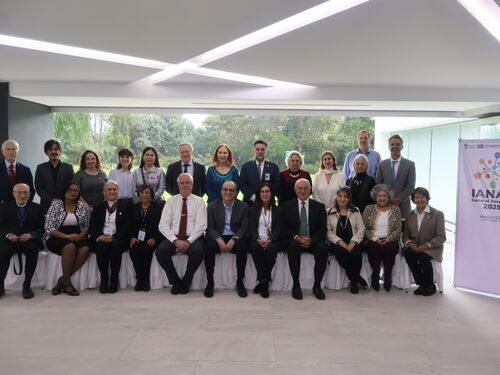Toward a More Just U.S. Energy System
Feature Story
By Hannah Fuller
Last update January, 17 2023
In recent years, systemic racism and inequality have been widely exposed across many sectors of U.S. society, particularly in the nation’s systems for justice, health care, education, and housing, to name a few. Less attention has been directed to injustices in the U.S. energy system, however — which was the focus of the National Academies’ 2022 Gilbert F. White lecture held in December.
“We are in what I would call a national energy insecurity crisis, where folks are making difficult decisions every day about whether to heat their homes or eat,” said Shalanda Baker, director of the U.S. Department of Energy’s Office of Economic Impact and Diversity, who was selected to deliver the lecture. Approximately one-third of all American households are “energy insecure” — or forced to choose between paying energy bills or buying other necessities — but more than half of Black households and nearly half of Latino households are energy insecure.
As the nation moves to adopt more renewable energy sources, Baker is tasked with addressing these long-standing inequities while also creating a more just energy transition — in partnership with other federal and state agencies, philanthropies, and the private sector.
“If we rely on the same methods and mechanisms of development that we relied on to create our fossil fuel economy and our fossil fuel system, we’re going to replicate many of the inequalities that we see in that system today,” she said.
The amount that households have to budget for their energy costs — or their “energy burden” — is typically around 2% to 3% of their income, but in some communities, it can be as high as 30%. High energy costs are not the only barrier to reliable access to energy, either. Other factors such as lack of regional energy grid resilience are also to blame. For example, Baker noted that in her home state of Texas, a high-profile storm in 2021 underscored the prevalence of blackouts in neighborhoods predominantly made up of people of color. In this case study, neighborhoods with a high proportion of minority residents are more than four times as likely to experience energy blackouts, according to researchers. This example points toward just one of many areas where additional research is needed to better understand the limitations of the country’s current energy system and where applying an energy justice lens is essential in the transition away from fossil fuels. “These are structural problems that are pervasive within our energy system. It’s not driven by intentional bias or racism; it’s operating within a broader system.”
And, as the transition to renewable energy gets underway, racial inequalities are already playing out in areas such as adoption of solar energy, job creation, and clean energy investments. To remedy these issues, Baker described the new “Justice40” initiative — created under an executive order from President Biden — which calls for 40 percent of certain investments in clean energy and energy efficiency, clean transit, affordable and sustainable housing, training and workforce development, and other areas to benefit disadvantaged communities.
The challenges of meeting that goal are daunting for DOE, said Baker. “How do you steer an agency that has produced incredible science and technology, but not necessarily equitable outcomes? How do you steer that type of agency in direction of equity?” But she emphasized the department’s commitment to the program and to addressing inequality in the energy system.
“If you don’t include communities, if you don’t think about the most marginalized, if you don’t think about the systems and structures of oppression from Day One, you’re bound to replicate inequality — including in the energy transition.”
Watch the full lecture here.



